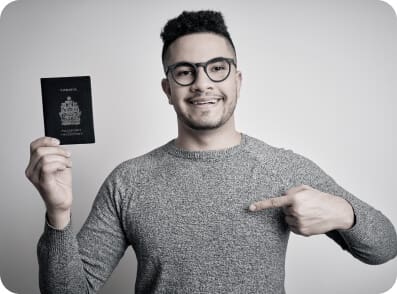Applying for a residence visa (sometimes called a residence permit) is a major step when you plan to live in another country for an extended period. Whether you’re moving for work, family reunification, study, retirement, or other reasons, the process can feel complex and bureaucratic. While details vary widely by country and by the specific visa type, there are common stages, documents, requirements, and pitfalls that applicants experience. This post walks through a typical residence visa application process, explains common categories of residence visas, lists typical documentary and financial requirements, outlines the steps from preparation to arrival, highlights processing timelines and appeals, and gives practical tips to improve your chances and reduce stress.
- People preparing to move abroad for work, study, family reasons, retirement, or long-term stay.
- Those curious about the administrative steps and paperwork involved.
- People who’ve started an application and want a roadmap to what comes next.
Key terminology
- Residence visa / residence permit: authorization to live in a country for a defined period (sometimes renewable).
- Entry visa vs. residence permit: some countries issue an entry visa to travel there and then require an application for a permit after arrival; others issue a residence visa that functions as permission to enter and stay.
- Sponsorship: an employer, family member, educational institution or other entity that supports your application.
- Consulate/Embassy vs. immigration authority: initial visa applications are often lodged at an embassy/consulate abroad; residence permits may be issued or validated by immigration authorities inside the destination country.
Common categories of residence visas
- Work visas (skilled workers, intra-company transferees, seasonal workers): typically require a job offer and sometimes a labor market test.
- Family reunification visas: for spouses, minor children, dependent parents, or other qualifying relatives.
- Student/residence for study: for degree-seeking students or long-duration courses.
- Investor/business/entrepreneur visas: for those investing capital or starting businesses.
- Retirement/long-stay visas: for retirees meeting minimum income/asset thresholds.
- Humanitarian/refugee/residence on protection grounds: for asylum or other protection statuses.
- Special categories: digital nomad visas, cultural exchange, volunteer placements, etc.
Typical stages of the residence visa application process
- Preliminary research and eligibility check
- Determine the correct visa category for your situation and whether you meet minimum eligibility (age, qualifications, job offer, relationship proof).
- Check country-specific quotas, priority occupations, or points-based criteria (if applicable).
- Review country-specific rules on dual citizenship, criminal record disqualifications, medical checks, and health insurance requirements.
- Gather required documents
While documents differ, common ones include:
- Valid passport (with sufficient validity and blank pages).
- Completed application form(s) — online or paper.
- Recent passport-sized photographs meeting specifications.
- Proof of purpose: job contract, university acceptance letter, marriage certificate, birth certificates, business plans, investment proof.
- Proof of financial means: bank statements, payslips, income statements, pension proof, scholarship letters.
- Health insurance coverage for the intended stay (some countries require specific coverage).
- Criminal record check / police clearance certificate (often from current country of residence and sometimes from previous countries).
- Medical examinations or vaccination records (e.g., TB test, general medical certificate).
- Accommodation proof: rental agreement, hotel reservation, or invitation letter.
- Academic or professional credentials, with apostille or consular legalization/translation if required.
- Proof of language ability (for some long-term residence categories).
- Sponsorship letters or employer attestations.
Tips for documents:
- Follow country-specific formatting (translated and certified documents, apostilles where needed).
- Ensure official translations are done by certified translators when required.
- Make clear, chronological copies and keep originals available for interviews.
- Pre-application steps (if required)
- Employer or sponsor may need to file a petition or labor market application on your behalf.
- Some countries require registration or application for a “work permit” or “authorization to hire” before the visa can be granted.
- For investors, pre-approval of business plans or proof of funds may be required.
- Submission of application
- Online submissions: many countries use online portals to upload documents and pay fees.
- Consular/embassy submission: you may need to book an appointment at the nearest consulate, submit documents in person, and provide biometric data.
- Postal submission: less common for residence visas but used in some jurisdictions for certain renewals or renewals abroad.
What to expect at submission:
- Payment of visa application fee and biometric fee (if any).
- Scheduling of an interview at a consulate or immigration office (common for family and work visas).
- Receipt of a tracking number or confirmation.
- Biometric capture, interview, and checks
- Biometric data (fingerprints, photo) may be taken at the consulate or upon arrival.
- Interviews may be short and routine (identity confirmation) or in-depth (details of relationship, job, or business plan).
- Security checks, background checks, and verification of provided documents are performed. This can include employer or education verification, police record checks, or checks with other government agencies.
- Medical examination and health insurance
- If required, complete the medical exam by an approved provider. Results might be valid for a limited window (e.g., 3–6 months).
- Provide proof of health insurance meeting minimum coverage requirements for the initial period of residence.
- Decision and issuance
- Approval may result in:
- A visa sticker or vignette placed in your passport allowing entry for a specified period, after which you apply for the residence permit inside the country.
- A residence permit card issued at the consulate before travel (less common).
- An “entry visa” to travel to the country and apply for the permit after arrival.
- If refused, you should receive a notice stating the grounds. Many countries allow appeal or reapplication within a set timeframe.
- Travel and post-arrival requirements
- Register with local authorities: in many countries you must register your address with the municipal office, police, or an immigration office within days or weeks of arrival.
- Apply for the residence card/permit (if the visa only allowed entry): provide biometrics and original documents at an immigration office.
- Get tax identification number, open a local bank account, and enroll in social security or health insurance if required.
- Attend any required language or integration courses (in some family reunification or long-term settlement cases).
- Renewals and conditions: track the expiration date and conditions (working limits, travel restrictions, family join rules).
Typical timelines
- Processing time varies dramatically by country and visa type:
- Fast-track decisions: weeks for some skilled-worker visas where employers sponsor and have priority lanes.
- Typical consular decisions: 1–3 months is common.
- Complex cases (investor visas, humanitarian protection, or background-check heavy cases): 3–9 months or longer.
- Delays can arise from missing documents, background checks that require international coordination, quotas, or high application volumes.
Common reasons for delay or refusal
- Incomplete or inconsistent documentation.
- Unsatisfactory proof of financial means or employment.
- Criminal records or prior immigration violations.
- Failure to provide certified translations or apostilles when required.
- Insufficient medical or insurance coverage.
- Fraudulent documents or misrepresentation.
- Failure to demonstrate genuine relationship in family reunification cases.
Appeals and reconsideration
- When refused, read the refusal notice carefully — it should indicate whether you can appeal, the deadline, and the grounds.
- Appeals can be administrative, through an immigration review board, or through the courts depending on the country.
- Reapplication is often an option if you correct deficiencies; in some cases, pay a fresh fee and submit updated documentation.
Special considerations by visa type
- Work visas: employer compliance matters (labor market tests, salary thresholds, sponsorship commitments). Know whether your visa ties you to one employer or allows switching.
- Student visas: many countries require proof of enrollment, funds to cover tuition and living costs, and restrictions on working hours.
- Family visas: official marriage or birth certificates, proof of relationship, and minimum income thresholds for sponsors are common.
- Investor visas: properly documented source-of-funds proof, business plans, and evidence of real economic activity are scrutinized.
- Digital nomad/remote-work visas: often require proof of income, remote employer contract, and health insurance; normally shorter-term.
Practical tips to improve your chance of success
- Start early: gather police checks, medical tests, and apostilles — these can take weeks.
- Create a clear document checklist and maintain organized, dated copies of everything.
- Translate and certify documents per the destination country’s rules.
- Use templates or sample cover letters to explain complex situations (e.g., gaps in employment, name differences, adoption).
- If an employer/sponsor is involved, ensure they understand their responsibilities and paperwork.
- Double-check photo specifications, passport validity, and fee levels before submission.
- Keep records of all correspondence, receipts, and payment confirmations.
- If unsure, consult an immigration lawyer or accredited immigration advisor for complex visas (investor, asylum, complicated family cases).
- Follow up politely with the consulate or immigration office if processing exceeds published timelines.
Costs to expect
- Application fees vary widely: from modest sums to several hundred (or thousands for investor programs).
- Additional costs: document translation and legalization, medical exams, police certificates, attorney fees, travel to consulates, and health insurance.
- Budget for local costs after arrival: housing deposits, initial living expenses, municipal registrations, and taxes.
After you receive your residence visa
- Understand the rights and limitations it confers (work rights, social benefits, travel within a region like Schengen).
- Note renewal windows and conditions for permanent residency or citizenship if you plan to stay long-term.
- Keep records of continuous residence where applicable (some countries require continuous physical presence for naturalization).
- Comply with local laws, tax obligations, and required notifications to authorities (address changes, employment changes).
Conclusion
While the residence visa application process differs from country to country, most applicants can expect a series of predictable steps: determine eligibility, gather and certify documents, possibly secure sponsor approval, submit the application and biometrics, pass medical and security checks, receive a decision, and complete post-arrival requirements. Preparation, organization, and attention to detail reduce delays and improve the chance of approval. For complex cases or when national rules are unclear, professional immigration advice can save time and prevent costly mistakes.





